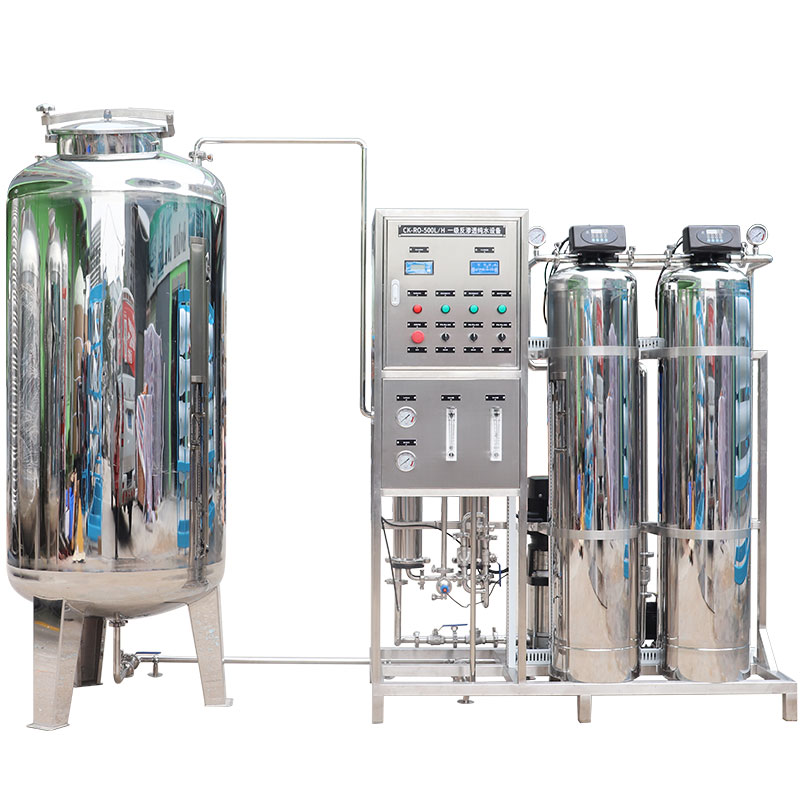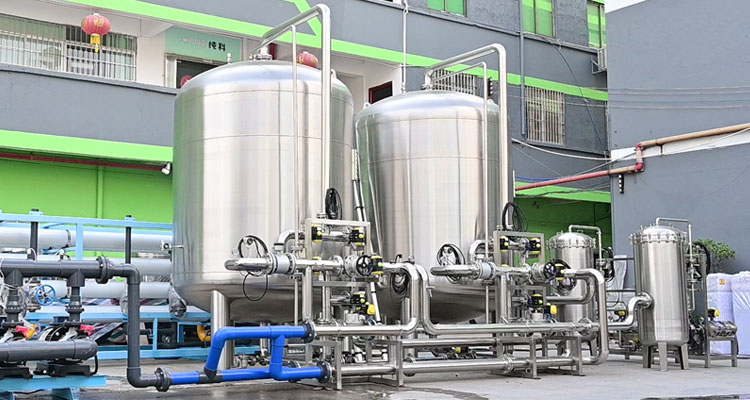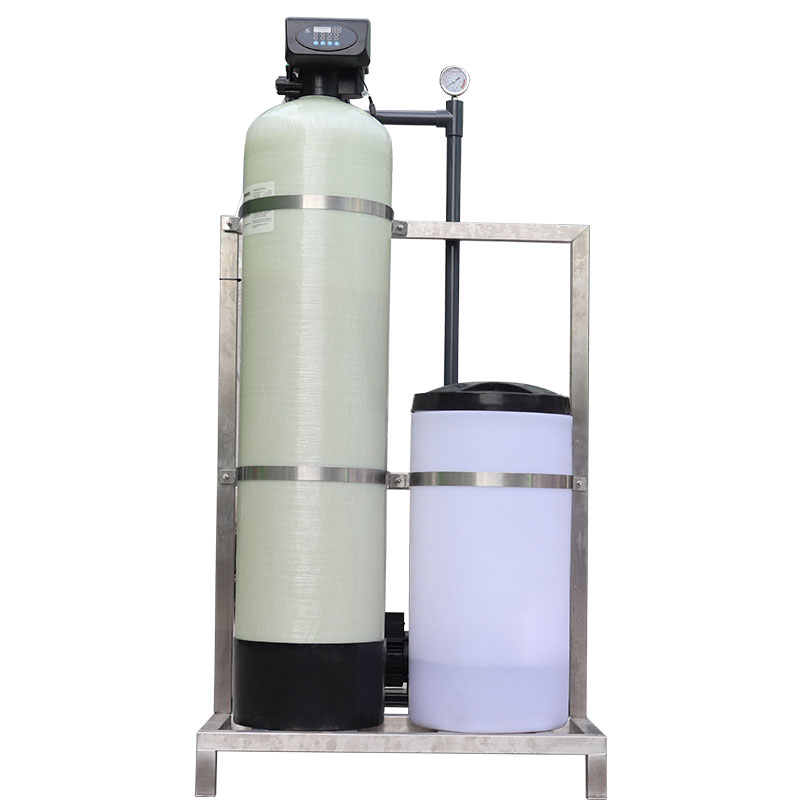Can water filters remove calcium? Which water filter works best?
Water is an essential resource in our lives, but the minerals contained in water can also cause some troubles in daily use. Calcium is a common mineral in water, especially in hard water areas. Excessive calcium content can cause scale accumulation, affect the efficiency of household appliances, and even affect the taste of daily drinking water.
Therefore, many families choose to use water filters to remove calcium from water. So, can water filters effectively remove calcium? If so, which water filter works best? This article will explore these issues in detail.

Where does calcium come from in water?
Calcium usually comes from the dissolution of water when it flows through calcium-rich strata or minerals. Water with high calcium content is often called "hard water", and calcium is one of the main components of hard water. Hard water areas are common in geological environments rich in limestone, dolomite or gypsum, and the calcium and magnesium in these rocks are easily dissolved into water.
What impact does calcium have on daily life?
Calcium in water will precipitate when heated, forming scale, which will accumulate in water heaters, coffee machines and other heating devices, reducing the efficiency of these devices and increasing energy consumption. Secondly, calcium tends to form a white residue on surfaces such as bathroom and kitchen sinks and faucets, which is difficult to clean and affects the appearance.
Although drinking water containing calcium is harmless to human health and even beneficial to bones, it may taste a little rough and sometimes affect the flavor of beverages such as coffee or tea.

Can water filters remove calcium?
The main function of water filters is to remove impurities, sediments, harmful chemicals and other components in water through filtering media, while the removal of calcium depends on the type of water filter and its working principle.
1. Limitations of conventional water filters
Most conventional water filters on the market (such as activated carbon water filters) are mainly used to remove chlorine, odor, particulate impurities, etc., and are not good at removing minerals dissolved in water, especially calcium and magnesium. Although these water filters can improve the taste of water, they have very limited or almost no effect on calcium removal.
2. Effective methods for calcium removal
To effectively remove calcium from water, a specific water treatment system must be used. Here are several technologies that can effectively remove calcium:
● Water softener: A water softener is the most commonly used device for removing calcium. It uses an ion exchange process to replace calcium and magnesium ions in water with sodium ions, thereby reducing the hardness of water. Water softeners usually use resin as the exchange medium. When water passes through the resin layer, calcium and magnesium ions are captured, while sodium ions are released into the water. This method is very effective and can almost completely remove calcium from water.
● Reverse Osmosis System: Reverse Osmosis system is a highly efficient filtration technology that can remove up to 90% of dissolved solids in water, including calcium. RO uses high pressure to pass water through a semi-permeable membrane, while calcium and other impurities are blocked on the other side of the membrane. Although the operating cost of the reverse osmosis system is relatively high, its calcium removal effect is very significant and is suitable for families with high water quality requirements.
● Distillation System: Distillation is a method of removing impurities, including calcium, by evaporating water by heating and then condensing it. Distilled water contains almost no minerals and is suitable for special uses that require pure water. However, the distillation system has a small processing capacity and high energy consumption, making it unsuitable for large-scale daily water treatment.

Which water filter removes calcium best?
Based on the above technologies for removing calcium, the most common and effective ways are water softeners and reverse osmosis systems. The following is a detailed comparison of the two systems to help consumers choose the solution that best suits them.
1. Water Softener
Water softeners use ion exchange to replace calcium and magnesium ions in water with sodium or potassium ions to remove hardness. Water softeners are ideal for families in hard water areas, especially those who are troubled by scale problems. After installation, they can significantly reduce scale, extend the life of household appliances, and improve the health of skin and hair.
Advantages of water softeners:
● Efficiently remove calcium and magnesium to prevent scale formation.
● Relatively simple maintenance, just regenerate the resin regularly.
● Large processing capacity, suitable for overall household water supply treatment.
Disadvantages of water softeners:
● Increases the sodium content in water, not suitable for people who need a low-sodium diet.
● Other chemical pollutants cannot be removed and must be used in conjunction with other filtration systems.
● There is a certain impact on the environment because salt water needs to be discharged during the resin regeneration process.
2. Reverse Osmosis System
The reverse osmosis system removes most dissolved solids in the water, including calcium, by passing water through a semi-permeable membrane at high pressure. The reverse osmosis system is suitable for families with high requirements for the purity of drinking water, especially those who want to remove calcium and other harmful substances at the same time. The system is usually installed under the kitchen sink to treat drinking water and cooking water.
Advantages of the reverse osmosis system:
● It can remove most soluble impurities, including calcium.
● The water produced is very pure and suitable for drinking and cooking.
● It can also remove other harmful substances, such as heavy metals and fluoride.
Disadvantages of the reverse osmosis system:
● Low treatment efficiency, relatively small water output, and wastewater.
● The system is complex to install and the cost is high.
● It has high water pressure requirements and may require an additional booster pump.

How to choose a suitable water filter?
Before choosing a water filter, it is recommended to conduct a water quality test to understand the hardness and other components of the water in your home. If the hardness is too high, a water softener is preferred; if there are other harmful substances in the water, a reverse osmosis system may be more suitable. Then, consider the household's water consumption and usage scenarios. If the main problem is scale in the whole house, a water softener is the most economical and affordable choice; if the purity of drinking water is concerned, a reverse osmosis system is more suitable.
In addition, water softeners usually require regular addition of salt and resin regeneration, while reverse osmosis systems require replacement of filter cartridges and membrane components. Consider whether these maintenance tasks are easy to operate when choosing. In addition to the initial purchase cost, the operating cost of the system should also be considered. The operating cost of a water softener is lower, but it will increase salt consumption; although the reverse osmosis system is more expensive, it can provide high-purity water.




